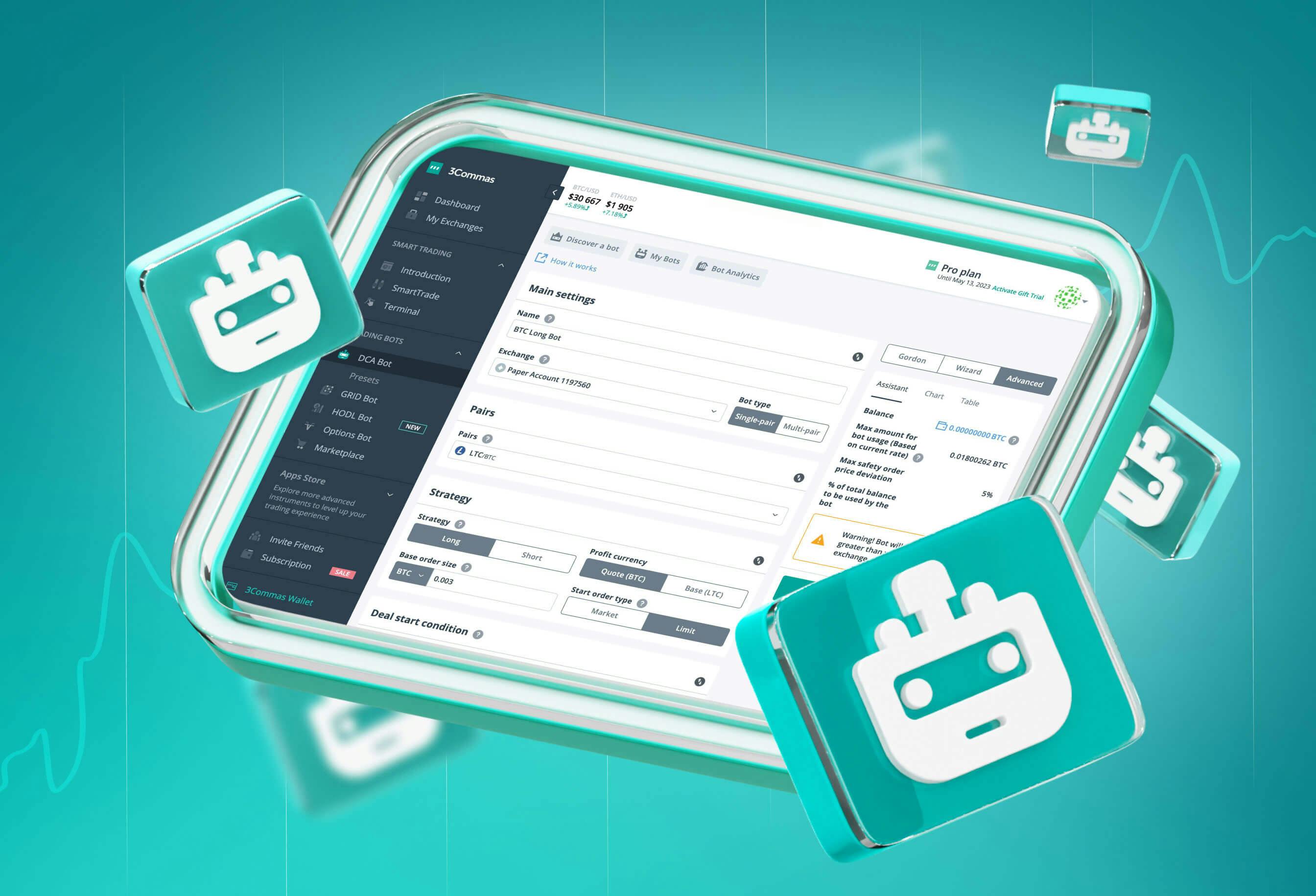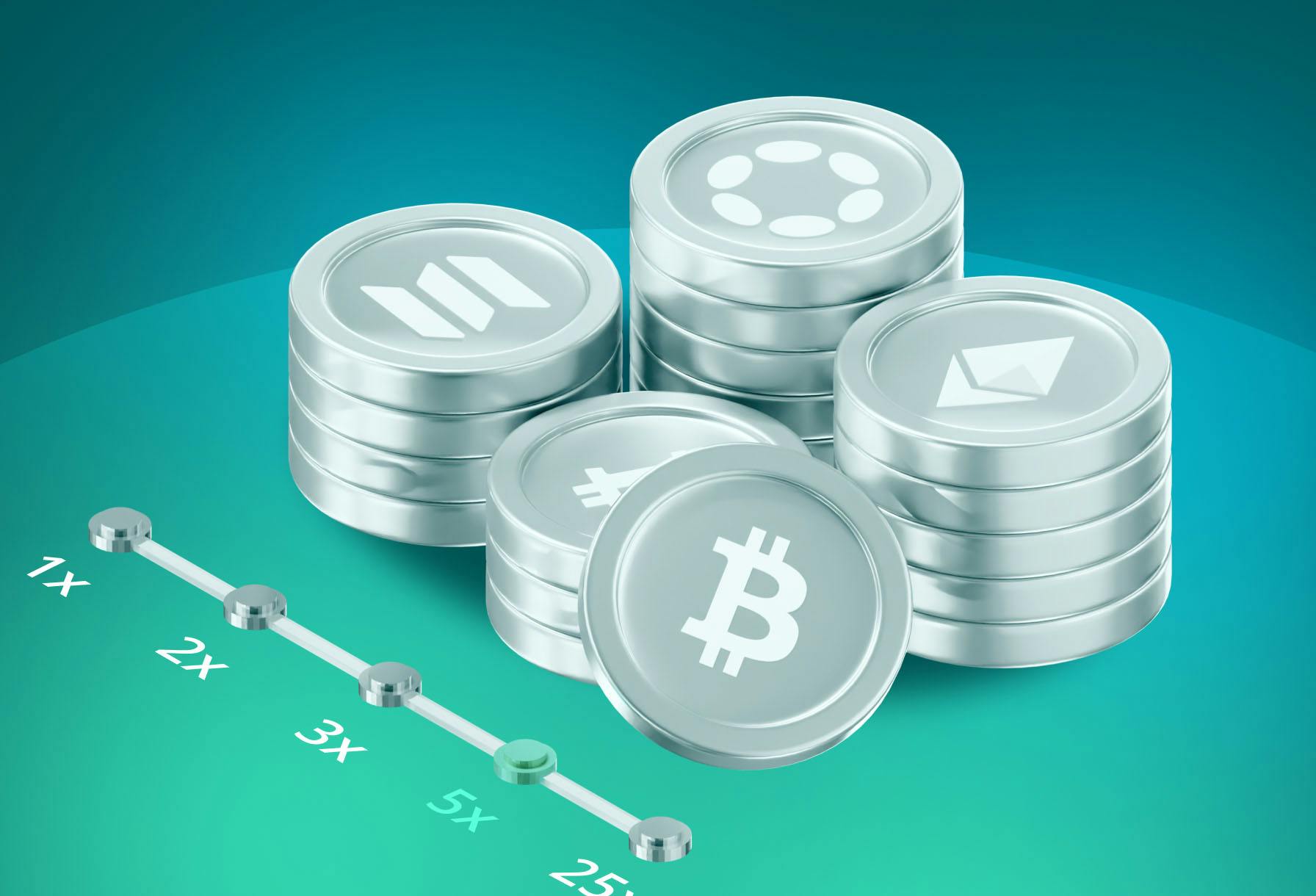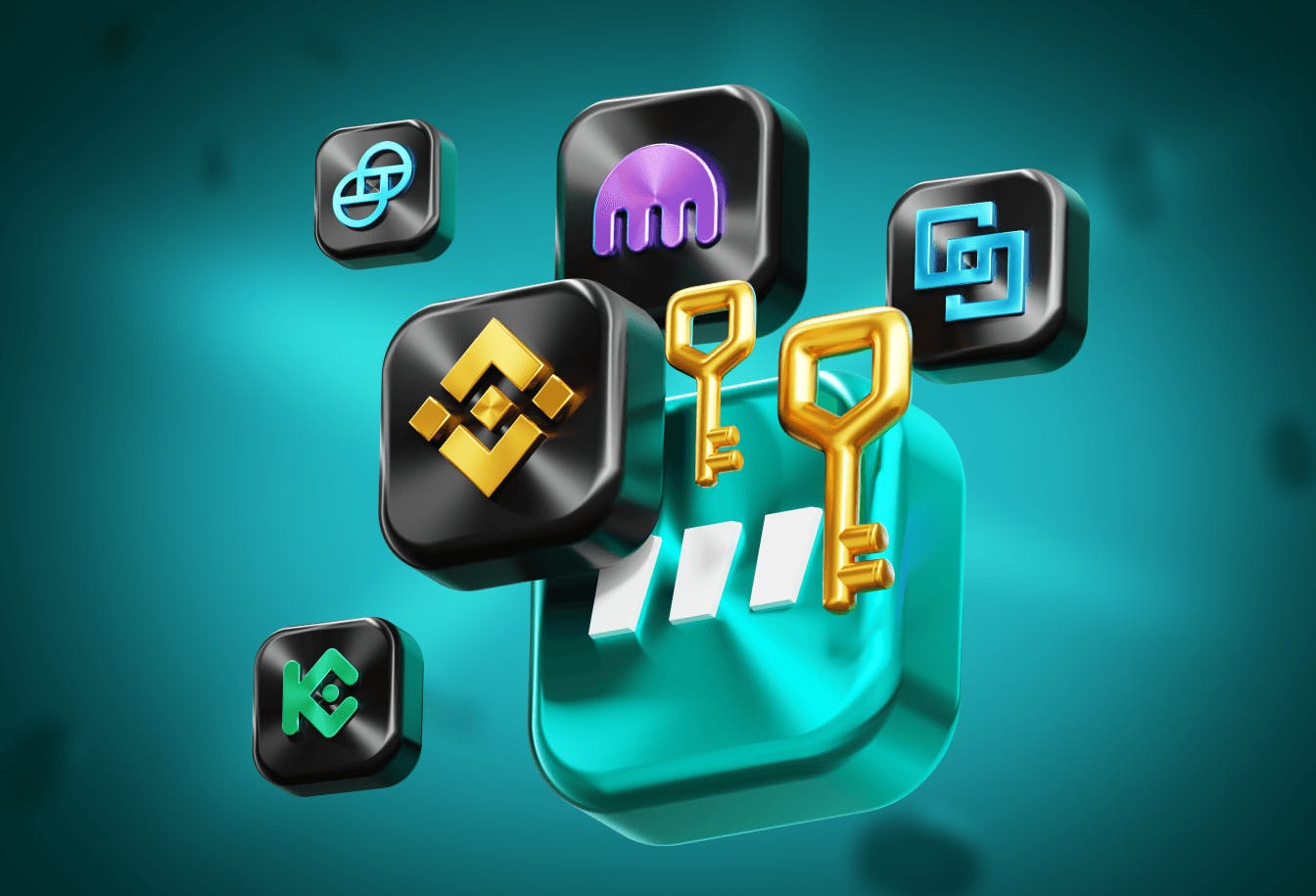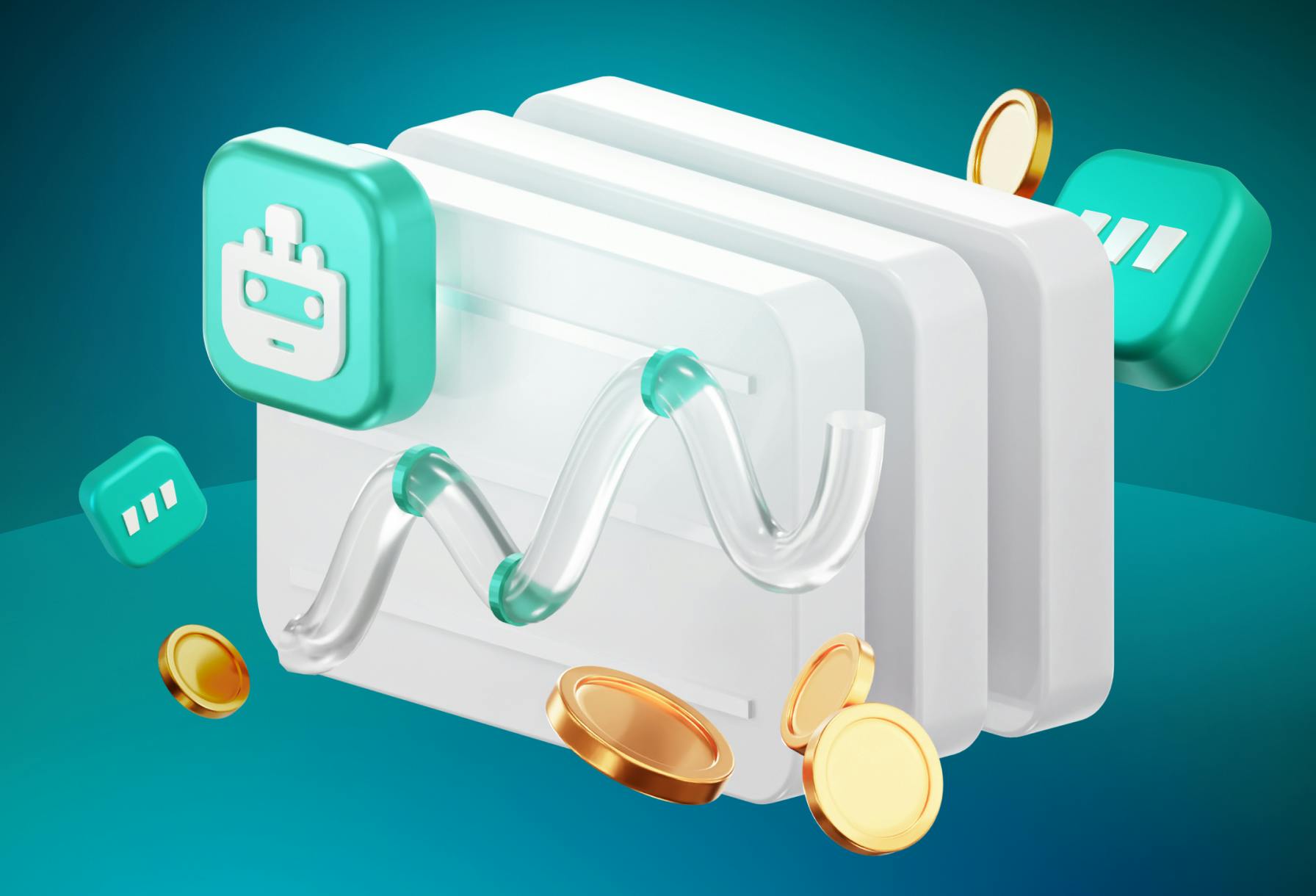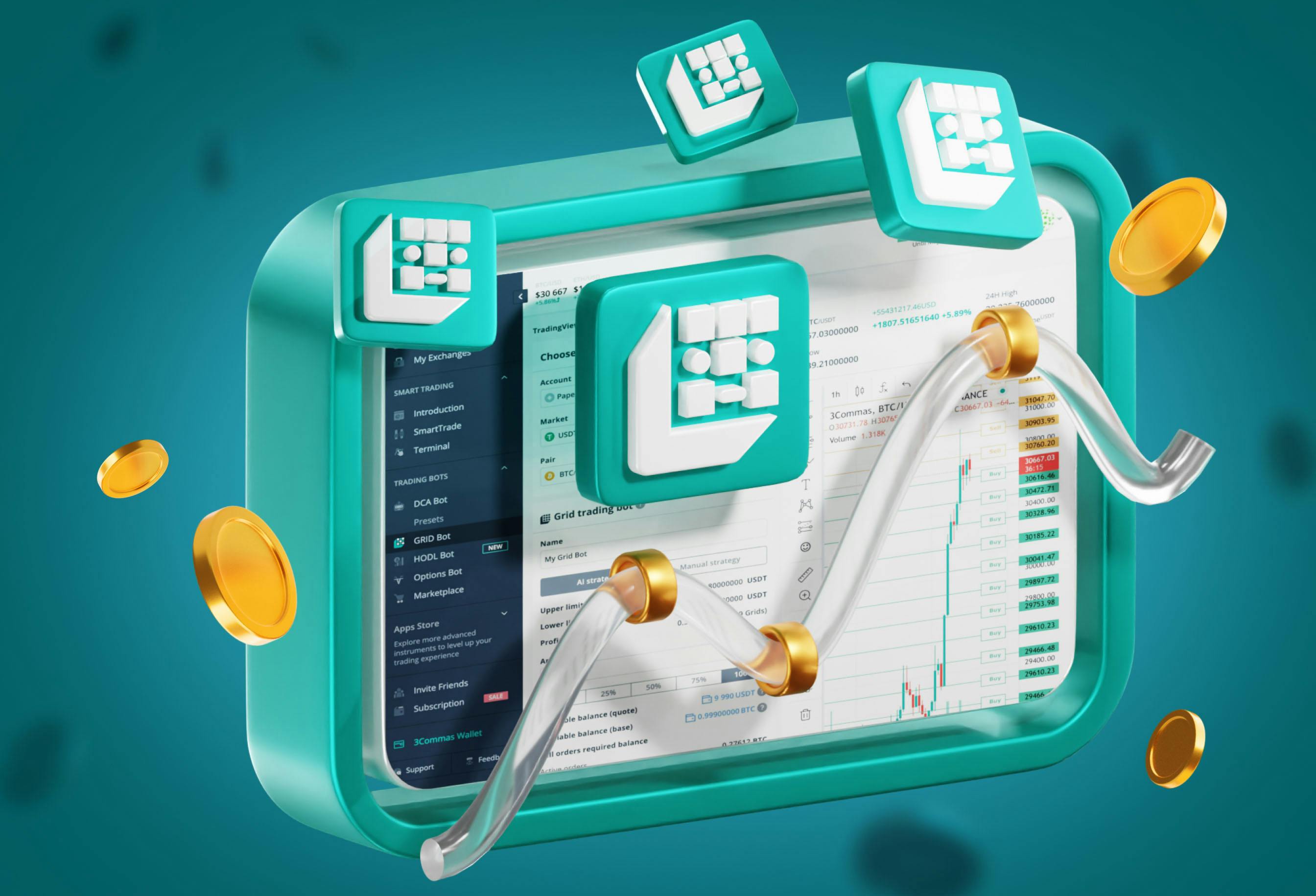
- All
- Tools
- Analytics
- Technical Analysis
- Trading
- Blockchain
- DeFi
- Guides
- Company News
- Educational
- Opinion
- Price Predictions
- Market News
- News
- Trading cases
- Practical guides
- Exchanges
- Trading signals
- Cryptocurrency
- Crypto bots
- Other
Become a crypto master
Learn everything about crypto,
trading and bots

Blockchain: The Future of Cloud Computing
Cloud infrastructure for AI bots is going decentralized in 2025.
- What is Cloud Computing?
- History of Cloud Computing
- The State of Cloud Computing Today
- What’s Wrong With Cloud Computing Right Now?
- What are Blockchain Projects Doing to Fix These Problems?
- Blockchain and Cloud Computing
- Benefits of Using Blockchain Technology in Cloud Computing
- Decentralized Cloud Computing Services
- The Future of Blockchain in Cloud Computing
- Conclusion
Start Trading on 3Commas Today
Get full access to all 3Commas trading tools with free trial period

In 2023, the digital landscape has evolved with the cloud at its core, powering everything from Netflix binge-watching sessions to routine email exchanges. Giants in the cloud space include Amazon Web Services (AWS), Microsoft Azure, Google Cloud, and Salesforce.
Windows 365, which facilitates the creation of a virtual cloud computer in any part of the world, is just one example of the revolutionary steps being taken today to ensure the continued success of cloud computing in the future. By 2025, the global cloud computing market is expected to be worth USD 832.1 billion, up from USD 371.4 billion in 2020.
In 2023, blockchain continues to emerge as a state-of-the-art technology, evolving rapidly and finding its place in myriad businesses globally. Its integration with cloud computing is especially noteworthy, bringing enhanced data security to the forefront.
This piece dives deep into the transformative influence of blockchain on the cloud computing landscape. We'll unpack the primary cloud computing hurdles that blockchain overcomes and spotlight the key blockchain initiatives steering this integration.
What is Cloud Computing?
Cloud operators provide computing services such as storage, databases, networks, and data processing over the Internet rather than on local servers or personal computers.
“The cloud” refers to a platform for hosting computing and storage resources. This is a so-called virtualized data center that is available for rent in exchange for a set fee.
Cloud services are more cost effective than traditional data centers. Many large organizations worldwide are using cloud computing systems to solve data management challenges and reduce infrastructure, and maintenance costs.
Cloud computing services provide browser-based dashboards that enable IT professionals and developers to organize resources and effectively manage accounts. Cloud services are also designed to work with REST APIs and Command Line Interfaces (CLI).
Cloud computing uses a traditional distributed database architecture where data is stored on the computers of all participants.
History of Cloud Computing
In 2023, as we reflect on the origins of cloud computing, our journey takes us back to the 1960s. It was during this decade that visionaries like John McCarthy and Douglas Parkhill first toyed with the notion of computing as a widely accessible public utility.
The 1970s saw IBM pioneering the real-world execution of resource sharing, presenting the "time-sharing" concept. RUSH (Remote Shared Hardware Users) was launched by IBM during an era characterized by the limitations of booking times and the linear nature of computing, termed “batch processing.”
This innovation allowed several users to access the computational abilities of a single computer concurrently via what were termed virtual terminals or "thin clients."
These milestones are now viewed as the dawn of virtualization in the realm of computing. Fast-forward to the 1990s, and these foundational ideas paved the way for what we now recognize as cloud computing. With the progressive enhancements in machine computational capabilities and expanding internet bandwidth, enterprises started leveraging these assets on an as-needed basis with dynamic scalability.
Marking a significant landmark in cloud evolution, Salesforce, launched in 1999, stands out as one of the earliest successful implementations of cloud computing, hosting its CRM system.
The State of Cloud Computing Today
Cloud computing embodies the foundations of digital business. This industry has grown at an extraordinary pace over the past ten years. The cloud computing industry is expected to surpass $210 billion by 2022. We are seeing more and more ways to connect and collaborate, moving to the cloud.
This accelerated growth is due to the increase in the volume of work and the number of games on the Internet, increased consumer demand for bandwidth and content, the global growth in the number of smartphones, the rapid development of web and mobile applications, and high costs of managing developers on a local server.
Leading Centralized Cloud Service Providers (CSP) – Amazon Web Services (AWS), Google Cloud, Microsoft Azure, and Alibaba Cloud – dominate with a 71% market share. AWS alone is three times the size of Microsoft Azure, the second-largest player in the CSP market.
Cloud computing is a concentrated and oligopolized market with ineffective pricing and anti-competitive practices such as split mining, where a large CSP copies the products of a small cloud company (already offered on its platform) and sells products that often include developments from unrivalled competitors.
With market oligopolization, innovation, choice, and flexibility are stifled, and ongoing services are costly. In this market context, there are 8.4 million data centers, and experts estimate that 85% of server capacity is underutilized.
What’s Wrong With Cloud Computing Right Now?
One cannot deny the numerous advantages of cloud computing. Despite this, it does have some obstacles to overcome. Examples of this are:
Security Challenges
Since you can't see the physical location where your data is being stored or processed, security is a major concern in the cloud computing world, as it is in many other areas of technology. This raises the potential for problems during implementation or management.
Today, 93% of industry leaders are worried that their cloud-based ecosystems will have a major data breach.
The main issues that surround cyber threats include:
- Large-scale data breaches
- Broken authentication
- Hijacking of accounts
- Compromised credentials
- Hacked APIs and interfaces
- Human error
These are issues that require urgent attention considering the fact cybersecurity is expected to cost about $10.5 trillion by 2025.
Lack of Expertise and Resources
Lack of available resources and/or knowledge is one of the main obstacles that businesses and corporations face when attempting to adopt cloud computing. Despite the rapid development of cloud technologies, organizations are increasingly putting more workloads into the system.
For these reasons, businesses are struggling to keep up with technological advancements. Expertise is also in higher demand than ever.
Service Outage
Since all resources are managed by the CSP, outages can occur at any time. Businesses that rely on the continuous operation of their processes cannot afford to have them interrupted. Downtime is inevitable even with the best cloud providers.
Complete Control Over IT Services
In the modern cloud environment, IT often lacks complete authority over infrastructure delivery, provisioning, and system operation. As a result, it has become harder for IT to provide important compliance, governance, data quality, and risk management.
What are Blockchain Projects Doing to Fix These Problems?
Golem
Golem is an open-source platform (built on Ethereum) that makes it easy to rent out idle computing resources in exchange for cryptocurrency.
As a result of this service, the price of resource-intensive processes like computer-generated image rendering, scientific computation, and machine learning will go down, making them more useful and affordable to a wider audience.
Centralized cloud service providers like Amazon, Google, etc., which supply computing resources, have restrictions such as hard-coded provisioning operations, closed networks, and proprietary payment systems. In response to these limitations, Golem created a decentralized platform where users could rent out their unused computational resources to other users who needed them to finish their work.
Storj
Storj is a blockchain-based decentralized storage platform. It's an open-source, private, and decentralized cloud storage platform.
The network's goal was to return control of data storage to its original owners while providing a more affordable, transparent, and secure platform than centralized competitors like Microsoft, Google, and Amazon.
To do this, Storj made a way for people to rent out storage space on their computers in exchange for the STORJ coin, which is Storj's coin.
The user's information would then be encrypted and digitally shredded before being stored in fragments across a network of computers. No one but the original owner can see the entire document.
Those who rent out their computing resources benefit financially, and everyone can see what's going on because all of the transactions and data transfers are recorded on the blockchain.
iExec
iExec provides an extensive suite of blockchain-based, distributed cloud services. The platform gives tokenized rewards to the distributed network of resource providers who make the project's core offerings (such as on-demand access to datasets, computing power, and applications) possible.
As off-chain computations return on-chain for blockchain-level consensus and validation, the network makes sure that each transaction is safe, private, and open.
Cloud Token
The Cloud Token Framework makes it easy to protect sensitive financial information. It makes it possible for card-not-present (CNP) tokens to be used, thereby opening up new possibilities for digital commerce and encouraging payment innovation.
The primary purpose of the Cloud Token is to displace fiat currencies as the sole means of payment for cloud services. It's an element of a larger financial framework that aims to make cloud services as common as electricity by making them accessible through decentralized peer-to-peer markets.
Blockchain and Cloud Computing
Companies around the world have realized that meeting the demands of digital business infrastructure takes a more decentralized approach. For greater access, flexibility, efficiency, and security, the cloud must evolve into a decentralized infrastructure.
Innovations such as serverless technology are causing the computing paradigm shift, freeing developers from configuring and managing the server, and allowing them to manage the resources required to run applications.
Numerous leaks in the cloud computing sector have pushed many startups to consider using blockchain technology for financial transactions and storing confidential information. This shows that the centralized cloud computing approach is starting to lose its grip.
This situation brings us back to a hybrid cloud approach, where companies incorporate blockchain in cloud computing and store data in both public and private clouds.
Benefits of Using Blockchain Technology in Cloud Computing
- Ownership tracking efficiency increase
- Decentralization
- Enhanced data security
- Enhanced private keys security
- Continuous ledger control
- Geo-independence
- Fast recovery in force majeure situations
- Microtransactions
- Distributed supercomputers
- Blockchain-based cloud computing projects
Decentralized Cloud Computing Services
Golem
Golem is a decentralized marketplace where you can rent or lease your computing power in exchange for Golem tokens. It’s a kind of supercomputer utilizing the power of on-chain computing.
Its solution is designed for a small, addressable market, requires users to learn a new language, and has no cost advantage since there is no fixed pricing structure.
Dfinity
Dfinity is committed to exploring the territories of the blockchain interconnected with the Ethereum project’s original goals. Dfinity’s vision is built around the idea that the new Internet infrastructure should support a wide range of applications for end-users and enterprises.
Social networking, messaging, search, storage, and peer-to-peer interaction are all examples of functionality that they plan to host on their public Web 3.0 cloud. It is worth saying that Dfinity is focused on smart contracts that have many restrictions.
Blockstack
Blockstack aims to provide a new type of decentralized Internet that gives users more control over their data and makes it harder to censor content. Blockstack makes building decentralized apps as easy as building cloud apps.
Developers use common libraries that simplify the process of creating solutions on the blockchain and do not require learning a new programming language. Users receive a universal login that does not require passwords and an encrypted drive that allows them to transfer their data to any application they want.
The project is, however, not fully suitable for computing since it is based on the Bitcoin protocol.
Ankr Network
Ankr Network provides a cloud computing resource management platform. Ankr is building a complete cloud infrastructure and marketplace for containerized cloud services. Datacenter owners can monetize spare computing resources with the Ankr cloud platform.
Node operators can use unoccupied cloud resources from data centers to launch blockchain nodes at a competitive price. The ANKR token is used as an asset for incentives, payments, and placement on the Ankr network.
Akash Network
As a decentralized alternative to the cloud oligopoly, Akash Network is developing Supercloud. This decentralized cloud computing marketplace allows any data center and anyone with a computer to become a cloud service provider by securely offering their unused computing cycles.
The Supercloud platform efficiently uses Tendermint and Cosmos and achieves impressive results by integrating cutting-edge containerization technologies with a unique bidding model to accelerate adoption. AKT is a utility token to provide economic security, stimulate early adoption, and stabilize exchange rates.
Akash is also developing Supermini, a powerful portable supercomputer that allows users to become Akash cloud providers from the convenience of home or office. Akash technology is designed to meet general computing needs and broader market use.
The platform is designed to serve the mainstream market and meet its growing needs. If the app runs on existing cloud providers such as AWS, Google Cloud, or Azure, it will be able to run on Akash.
The Future of Blockchain in Cloud Computing
Blockchain is the next step in ensuring information security. Data is stored on numerous nodes around the world and does not have a single point of vulnerability. The incorporation of blockchain into cloud computing solves the problem of data protection in many possible unexpected scenarios.
Files uploaded to the blockchain are controlled and accessible only to those parties who have a corresponding key to access encrypted files. Existing blockchain projects have certain drawbacks, but solutions such as Akash Network allow secure access to cloud computing at an affordable rate compared to the current vendors on the market.
Conclusion
As we navigate through 2023, cloud computing stands as a cornerstone in the contemporary business arena. Yet, organizations need to tread carefully in their dependence on this technology. The inherent concerns of security, compliance, and the centralistic design of the cloud could potentially jeopardize a company's functionality.
However, the horizon holds promise with blockchain, a technology reshaping data handling, financial dealings, and the core processes of businesses. The way forward seems to be the fusion of blockchain and cloud computing, paving the way for enhanced security, decentralization, heightened privacy, robust authorization, and increased efficiency.
Cloud Meets Chain: Automated Trading in a Decentralized Compute Era
In 2025, blockchain-based cloud computing has matured into a robust infrastructure for running ai crypto trading bots at scale. Decentralized networks like Akash, Flux, and Phala now host bot strategies, signal engines, and real-time data pipelines in permissionless environments.
This shift matters because decentralized compute adds resiliency and censorship resistance to automated strategies. Institutional traders and asset managers are increasingly migrating execution logic to cloud-native blockchain systems to improve reliability, reduce infrastructure cost, and sidestep centralized risk points.
With 3Commas integrations and private infrastructure tools, traders can now host auto trading bots in decentralized cloud environments—while maintaining latency-sensitive connections to exchanges and data providers.
Blockchain and Cloud Computing FAQ
Since blockchain is an entirely novel concept, the best way to learn it is through direct experience rather than reading about or watching others do it. Here are ideas of some projects that can be done with blockchain:
- Crowdfunding platform
- Tracking of shipment location data
- Peer-to-peer ridesharing
- Transparent charity application
- Decentralized web-hosting platform
- Decentralized voting system
- Loyalty points exchange system
- Food tracking
In the context of cloud computing, blockchain has been dubbed "Blockchain as a Service" (BaaS). By offering a decentralized storage architecture with virtual storage nodes, blockchain can deliver brand-new cloud storage services that are highly resistant to data alterations.
Combining cloud computing with blockchain technology solves two of its biggest problems: security and privacy. Data loss/leakage is a big concern when it comes to cloud security. Blockchain can provide security and secure databases as a result of data encryption.
Using Amazon Web Services (AWS) streamlines, accelerates, and improves the process of creating blockchain and ledger applications. When it comes to blockchain and ledger technology workloads, AWS has more satisfied customers than any other cloud provider.
Whether you require a fully managed blockchain network that gets rid of third parties or a database of a centralized ledger that keeps a record of transactions that can be verified cryptographically, AWS has the tools to meet your specific needs. It’s also interesting to know that 25% of all Ethereum workloads throughout the world work on AWS.
It is possible to use blockchain and blockchain networks in a cloud service (like cloud computing). Improved data security, faster system discovery, system interoperability, traceability, decentralization, and many other benefits are made possible by integrating blockchain into cloud computing.
Blockchain has been considered a Blockchain as a Service (BaaS) within the context of cloud computing. The blockchain enables new, highly tamper-resistant cloud storage features by providing a decentralized storage architecture using virtual storage nodes.

A proven leader, successful at establishing operational excellence and building high-performance teams with a sharp focus on value creation and customer success.
READ MORE
- What is Cloud Computing?
- History of Cloud Computing
- The State of Cloud Computing Today
- What’s Wrong With Cloud Computing Right Now?
- What are Blockchain Projects Doing to Fix These Problems?
- Blockchain and Cloud Computing
- Benefits of Using Blockchain Technology in Cloud Computing
- Decentralized Cloud Computing Services
- The Future of Blockchain in Cloud Computing
- Conclusion



